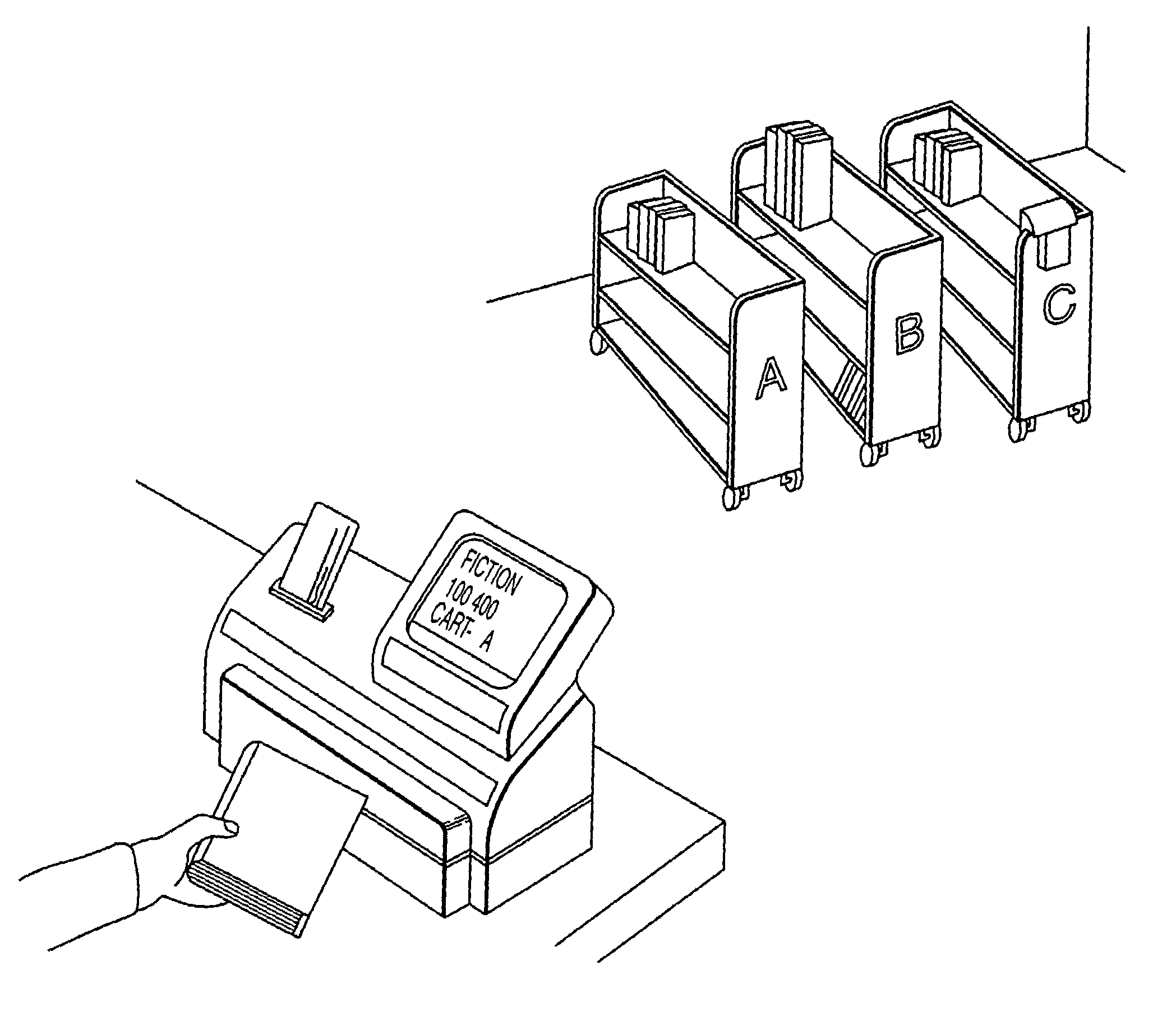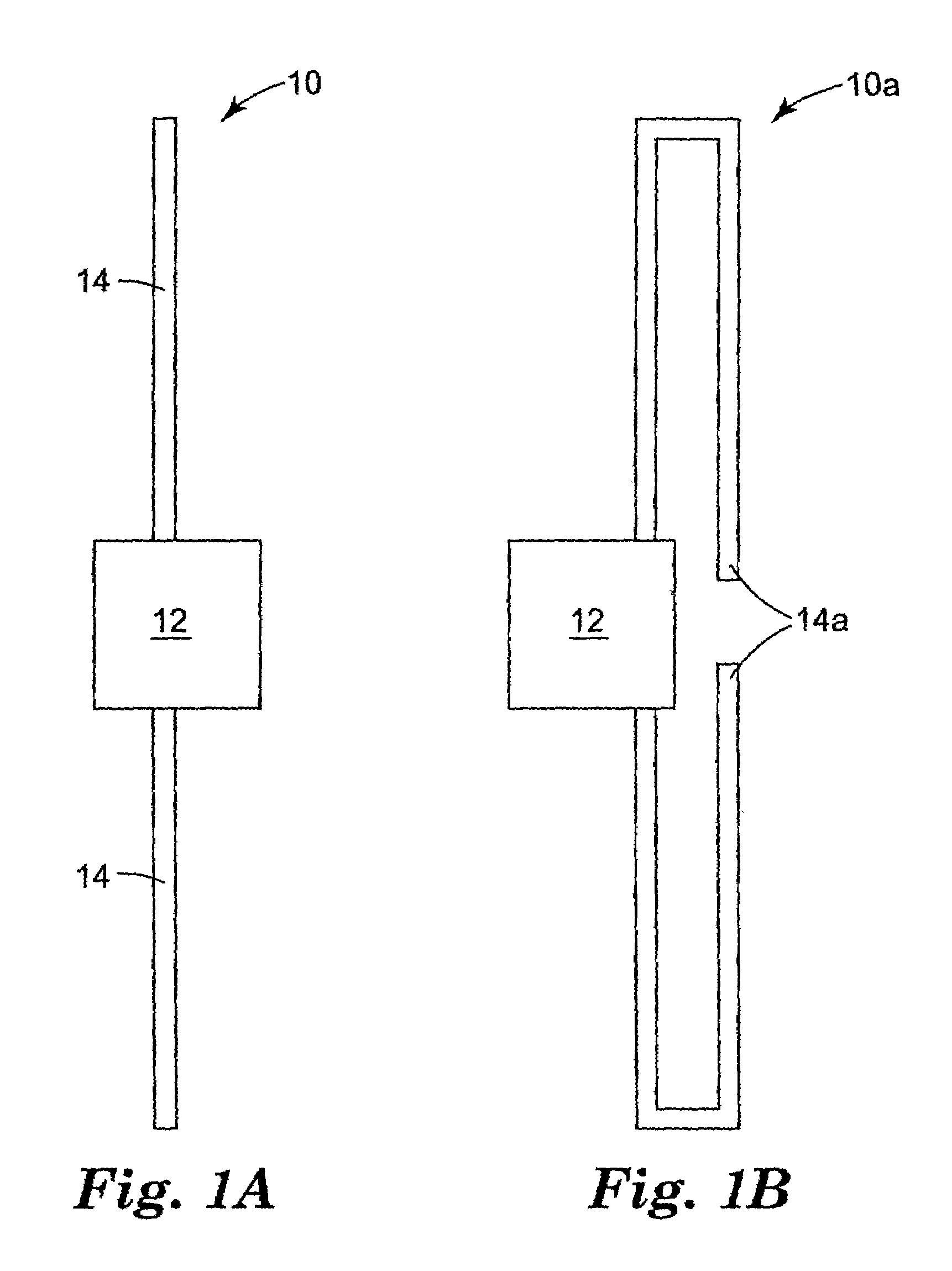Radio frequency identification systems applications
a radio frequency identification and application technology, applied in the field of applications for radio frequency identification systems, can solve the problems of limiting the location affecting the accuracy of the optical bar code system,
- Summary
- Abstract
- Description
- Claims
- Application Information
AI Technical Summary
Benefits of technology
Problems solved by technology
Method used
Image
Examples
example one
[0051]A combination tag was made in accordance with the present invention. A permalloy strip produced from an alloy available from the Carpenter Technology Corporation of Reading, Pa. under the designation “HyMu80” was attached to a test fixture manufactured by Single Chip Systems (SCS) of San Diego, Calif.
[0052]The strip measured approximately 1.6 mm (0.625 in) wide by 0.0254 mm (0.001 in) thick by 10.16 cm (4 in) long. The test fixture consisted of a standard SCS 2.45 GHz antenna connected to an LED diode. The device was designed so that upon exposure to a 2.45 GHz field strong enough to power a typical SCS RFID tag the LED would glow, providing an immediate visible confirmation of the proper operation of the power-receiving portion of the device. Upon replacing the standard SCS antenna with the prototype permalloy antenna, the LED illuminated at approximately the same field strength, confirming the successful operation of the prototype.
example two
[0053]FIG. 3 illustrates another embodiment of an antenna that is believed useful with a 13.56 MHz RFID design. At this frequency, a coil-type antenna geometry is preferred. The spiral turns comprising the coil are formed from a magnetic alloy such as permalloy, either by etching (physical or chemical), die cutting, or deposition through a mask. The straight “arm” portions of the coil serve also as the magnetically responsive elements in this design. However, the reduced length of these metallic elements in this geometry limits the effectiveness of the magnetic security portion of the device. In the embodiment shown in FIG. 3, flux collection elements provided at the corners have been added to the antenna coil to overcome this limitation. The construction shown in FIG. 3 would, preferably, include a capacitor as previously described to tune the operating frequency of the antenna to the prescribed interrogation frequency.
[0054]The characteristics of the antenna described in this exam...
PUM
 Login to View More
Login to View More Abstract
Description
Claims
Application Information
 Login to View More
Login to View More - Generate Ideas
- Intellectual Property
- Life Sciences
- Materials
- Tech Scout
- Unparalleled Data Quality
- Higher Quality Content
- 60% Fewer Hallucinations
Browse by: Latest US Patents, China's latest patents, Technical Efficacy Thesaurus, Application Domain, Technology Topic, Popular Technical Reports.
© 2025 PatSnap. All rights reserved.Legal|Privacy policy|Modern Slavery Act Transparency Statement|Sitemap|About US| Contact US: help@patsnap.com



